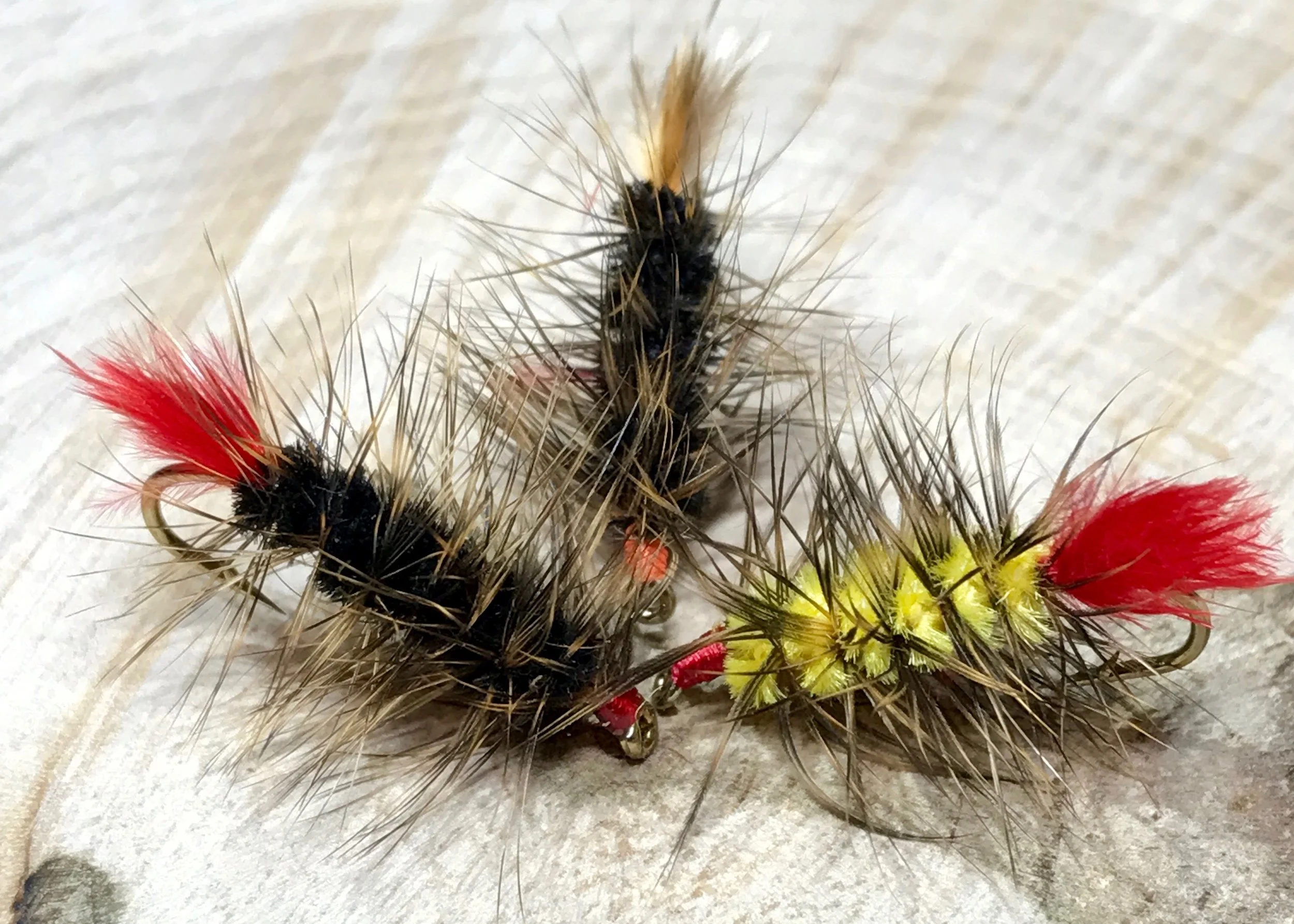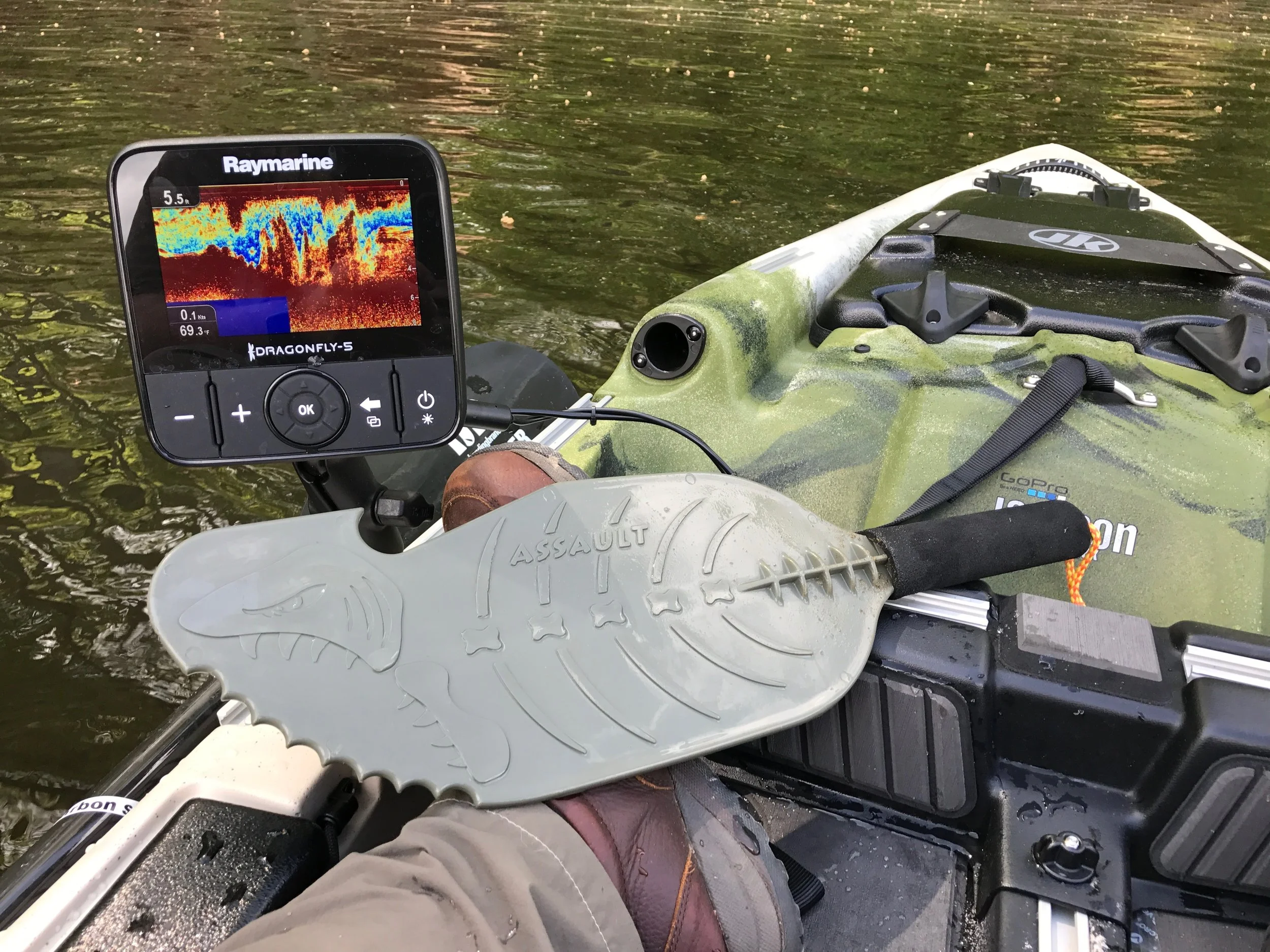If you have not chased pickerel with a fly rod you're missing out on a lot of fun; their explosive topwater takes will get your adrenaline flowing. They are acrobatic hard fighting fish that will have you begging for more.
Read moreThe Wooly Worm
A very old pattern that works as good today as it did a hundred years ago!
The wooly worm is a predecessor to one of the most popular and effective flies ever invented, the wooly bugger. Coming from the same bloodline, it is just as effective as it is more famous relative.
Read moreThe Fly Swap...
Our first fly swap was organized by Panfish On the Fly contributor Jake Wade. The exchange was opened up to the first ten individuals who signed up. The requirements were simple, tie ten of your favorite panfish patterns...
Read moreThe Hand Paddle - An Essential Piece of Equipment for the Kayak Angler
A hand paddle is an essential piece of kit for the kayak angler
As I was transferring essential gear from one boat to the other, one of the first pieces of kit to have a permanent home in my new boat was my hand paddle.
Read moreFish the Pre-spawn Season for Big Bluegills
When bluegills get this size it is easy to understand why they are called panfish!
In early spring, the water begins to warm and bluegills and other sunfish leave their deep water sanctuaries and head to the shallows. For several weeks before they start breeding they patrol shallow water feeding aggressively as they build up their energy stores for the rigors of the spawning season. When water temperatures reach the low 60's the fish will begin staging in the shallows in the same areas that they will ultimately create beds and start spawning once the water temperature approaches 70 degrees.
Early in the morning, when the air and water temperatures are still on the cool side it will be a subsurface game. Nymphs, wet flies, and small streamers will all produce fish. My favorite patterns include wet flies like my panfish versions of the Pass Lake Special and traditional soft hackles. The drab flies that I used during the winter can be put back in storage. This is the time of year where color becomes an attractor. The flies I fish this time of year will always have a little splash of color. As far as streamers go the James Wood Bucktail is a big bluegill killer. Big bluegills, crappie, bass, and pickerel can't resist a JW Bucktail slowly retrieved through the water.
Another big bluegill seduced by the James Wood Bucktail!
On most days, if the sun is shining, you can expect the topwater bite to turn on by mid-day. Bluegills will actively feed on the surface once the water temperatures reach the mid-sixties. Nothing beats the aggressive take of a big bluegill on top! For dry flies, I prefer a fly that will float all day without cleaning or the application of a floatant. You can expect to catch dozens of fish on a single fly. Cleaning, drying and prepping a fly to fish properly can be a pain. For that reason, I like flies constructed of foam, as they are unaffected by water or fish slime and float like a cork. They require no maintenance, and they float well enough to suspend a dropper off if you so desire.
Foam topwater flies are indestructable!
I like to target brushy banks with plenty of fallen timber and overhanging trees. Though large fish will sometimes enter very shallow water I prefer a shoreline with a foot or two of water right up against the bank. Fishing these locations from shore can be problematic for the shore based angler. The thick cover that makes these shorelines attractive to fish will make it difficult to fish from the bank. My preferred way to fish this time of year is from a small boat, canoe or kayak. Cast as close to the bank as possible and work the fly back towards the boat. Be sure to target fallen trees, bankside bushes, and overhanging trees. The largest fish will hold tight to cover.
A kayak is the perfect watercraft for targeting early spring bluegills.
Bluegills and sunfish are not the only fish in the shallows this time of year. You can expect a mixed bag of bluegill, crappie, bass and pickerel occupying the same water. I catch some pretty big bass on the tiniest flies this time of year. I am always surprised when a 4 or 5-pound bass inhales a tiny streamer intended for panfish or explodes on a small popping bug fished up against the bank. I also lose quite a few flies to toothy pickerel patrolling the same shorelines.
Crappie are a welcome by-catch when fishing for early spring bluegills.
As far as gear goes a 7 1/2 - 8 foot 3 weight fly rod is ideal. Long leaders are not needed a 7 1/2 foot 3x or 4x leader will do the trick. A lot of folks like lighter rods for panfish, but I find that a 1 or 2 weight rod does not perform well on windy days or when tossing larger more wind resistant flies. Then there is the occasional bass or pickerel to contend with. There are plenty of days when a 4 or even a 5 weight rod may be the best choice, especially if the wind is up or you want to cast popper dropper rigs.
A nice fish that ate a damsel fly nymph suspended off the back of a foam bug. This set up would be a real challenge to cast on a 2wt fly rod!
The fish will be in prime shape this time of year as they begin to put on their spawning colors. Bluegills, pumpkinseeds and other species of sunfish are some of the prettiest freshwater fish that swim. Springtime panfish are a kaleidoscope of colors this time of year. Even the darkest of fish will reveal a rainbow of colors if you take a close look at them.
A dark male bluegill all decked out for the ladies.
Fishing is at it's easiest now and in the coming weeks as the fish begin to spawn. This is also the time of year when fish populations are at the most risk. Bluegills and other panfish are plentiful in most waters and can withstand some harvesting as long as it is done wisely. As tempting as it may be to keep the largest specimens, these are the fish that need to be released, especially large male bluegills. It is the male bluegill who builds the nests and protects the eggs and young from predators, It is important to release these large fish to ensure healthy populations in years to come. I like a platter of fried bluegill as much as the next guy (maybe more!) so if I am going to keep fish for the table I will take home fish in the 7-8 inch range and anything larger than 8 inches goes back in the water. This ensures the largest, strongest, healthiest fish are allowed to pass on their genes, protecting future generations.
Now is the time folks...get out there!
Limit your limit! Put them back!










